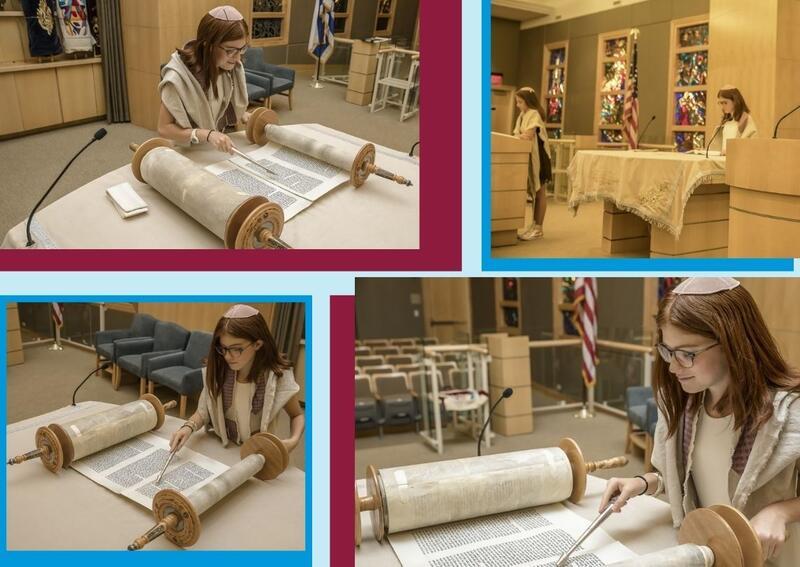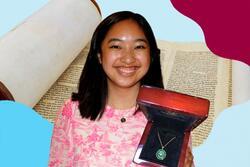Fighting to Include the Imahot at My B'nai Mitzvah
“That’s not the way the prayer is done here.”
“What do you mean? I’ve always done it this way.”
“Well, not here. It’s not the tradition of our synagogue.”
It was 6pm on a Monday night and I’d just wrapped up a tutoring session for my b’nai mitzvah. I was tired, hungry, and ready to go home; but, instead of going home, my backpack slid off my shoulders and I sat back down at the table in my synagogue’s library. Our exchange didn’t last very long, as it seemed my tutor’s answer to my question was final. I felt small sitting next to her, like my opinion was insignificant. I left the session unsure where our conversation would lead, and I reluctantly said good night and headed home.
I’d questioned why I wasn’t learning the Amidah, which is traditionally said just with the avot (an acknowledgment to Judaism’s patriarchs), with the imahot (the component for the matriarchs), for my b’nai mitzvah. I found myself ending my tutoring session with questions swirling in my head: Wasn’t this my b’nai mitzvah? Why was the decision not up to me? Was there a rule against doing the Amidah with the imahot at my synagogue? No matter the answers to these questions, I wasn’t going to take no for an answer; I'd decided I would chant the Amidah with the imahot at my b’nai mitzvah.
The Amidah is a central prayer in Jewish services. Amidah, which literally translates to “standing,” is said while standing up. It’s also first said alone and then repeated as a whole congregation. For me, the Amidah has always provided a way to clear my mind and center my thoughts on intention and gratitude. I’ve come to realize how important saying the imahot as part of the Amidah is to me, and this realization included lots of reflection. Similarly to how the Amidah is said privately and aloud, this process for me took place both individually and with many people around me.
For my b’nai mitzvah, I wondered if I should even say anything about the imahot conflict. I wondered if it was my place to question the rules. I thought that anything I did wouldn’t matter: after all, I was only a kid. I confided in my two moms and grandparents to help me process my feelings. They helped me see that even if my concerns were correct, which they weren’t, it was critical to stand up for my beliefs. This internal and external contemplation helped me recognize that every time I recite the Amidah with the imahot, I’m standing up to a history where women have been left out of the narrative. For my b’nai mitzvah, I would take this rebellion one step further and stand against a rule prohibiting me from saying the imahot.
Ready to get to work on these issues, I did some investigating. While I previously knew that one pillar of my synagogue was egalitarianism, I learned that traditionalism was one as well. During Saturday morning services, I talked to a few congregants to understand this conflict of ideals. They explained that members found it important to chant the exact words chanted by our ancestors, and these words didn’t include the matriarchs. One person acknowledged that including everyone regardless of gender was a value of my synagogue. But if my synagogue was a space where people of all identities were theoretically able to participate fully in prayer services or other rituals, why was the Amidah the exception? As someone who also values tradition and history, I understood the argument for upholding a long established custom and the words spoken thousands of years ago by our ancestors. But there was also a voice in my head telling me that my synagogue’s rule wasn't right. During these conversations, I realized that I can't separate my Jewish and feminist identities, and that both identities were present and equal in my decision to rebel. I understood that no one identity is more important than another; rather, they both play a role in forming who I am.
I met with my rabbi to discuss the Amidah in my service. He gave me texts to read before sitting down with him, which I only recalled once my mom reminded me years later. We talked for a good while about why chanting the imahot was important to me. Finally, he agreed to change the policy and to allow me to include them on one condition: I would have to lead the entire rendition of the Musaf service if I wanted to include the imahot. While his decision was confusing to me, it felt like a win. I, a thirteen year girl, had convinced the rabbi of my synagogue to change a rule no one else was willing to challenge. At my synagogue, the services are lay led, meaning that even though there’s a rabbi, congregants lead the services. Because of this decision, the service leader now could choose which rendition of the Amidah to lead at services.
Over the years, when I return to my synagogue for services, I’ve seen congregants continue to follow my lead and include the imahot in the Amidah prayer. Since my b’nai mitzvah, the condition regarding chanting the full Musaf has been discarded because so many people choose to recite the matriarch's portion. It’s served as a lesson for me: fighting for what you believe in may be awkward and scary, but it’s worth it when you can make long-term change for the better. Every time I recite the Amidah now, I have a greater appreciation for the meaning of tradition, but I also have a deeper connection with my values of feminism and activism. Many years after my b’nai mitzvah, I continue to explore the ways in which my Jewish and feminist identities both clash and intertwine with history and tradition.
This piece was written as part of JWA’s Rising Voices Fellowship.







